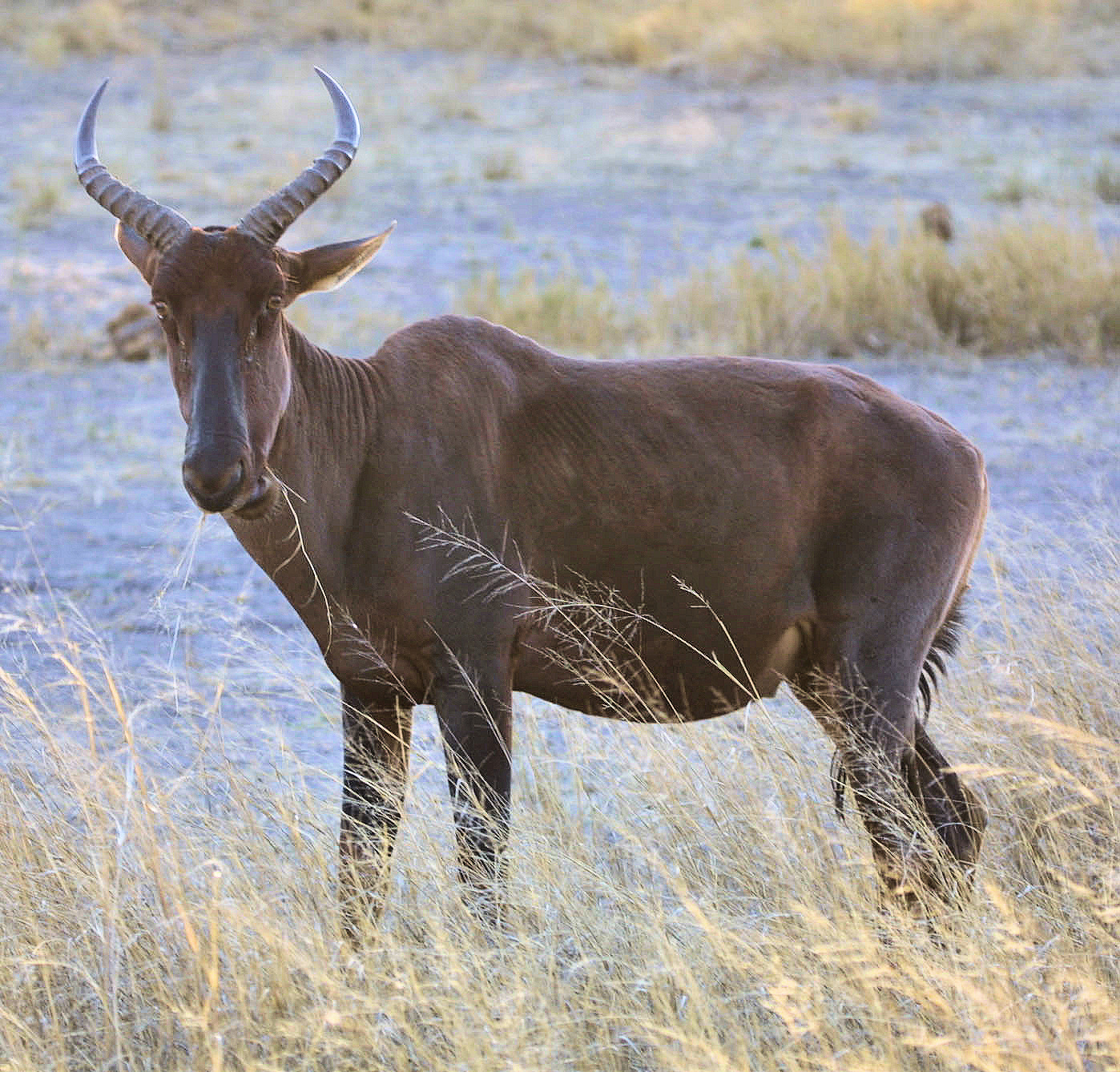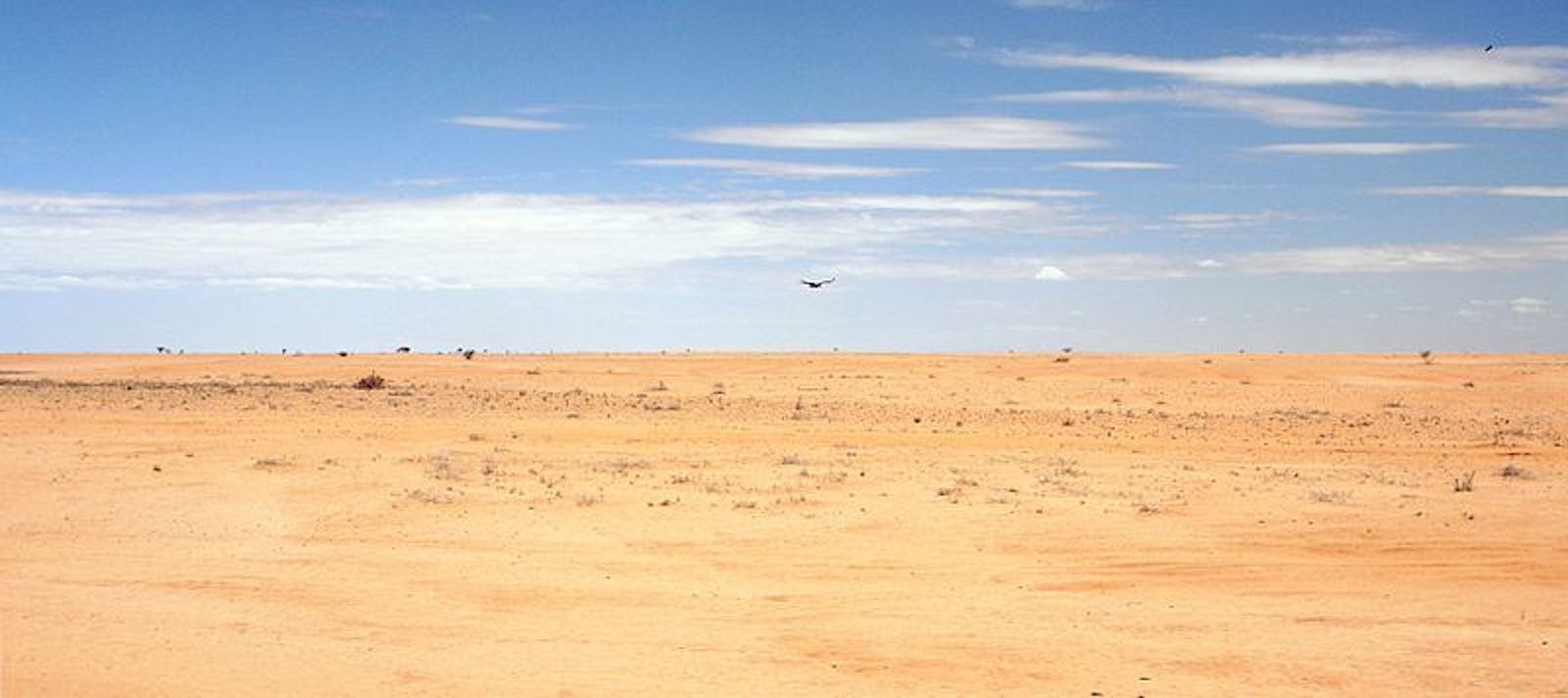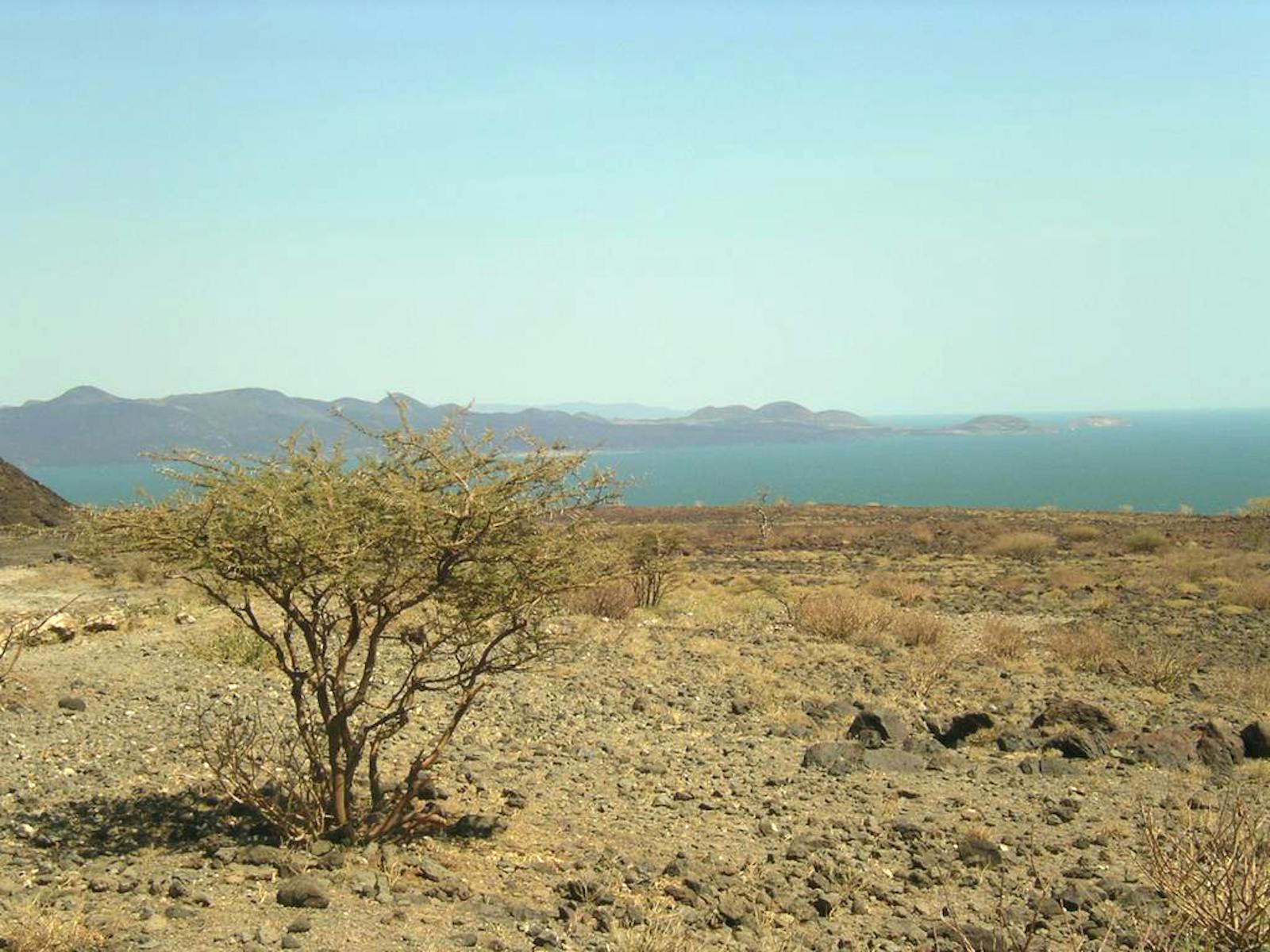Masai Xeric Grasslands and Shrublands
The ecoregion’s land area is provided in units of 1,000 hectares. The protection goal is the Global Safety Net (GSN1) area for the given ecoregion. The protection level indicates the percentage of the GSN goal that is currently protected on a scale of 0-10.
Bioregion: Lake Turkana-Sudd Grasslands, Bushlands & Forests (AT21)
Realm: Afrotropics
Subrealm: Horn of Africa
Ecoregion Size (1000 ha):
7,498
Ecoregion ID:
50
Conservation Target:
22%
Protection Level:
3
States: Ethiopia, Kenya, South Sudan
Within this ecoregion is the vast, inhospitable Dida-Galgalu Desert which is a highly arid, black lava desert where rainfall is unpredictable, averaging between 200–400 mm per year. Also found within this dry, barren region is the “Jade sea”, otherwise known as Lake Turkana. It is famous for its extraordinary colour which is caused by the blue-green phytoplankton living on the lakes surface. It is also known for being the largest permanent desert lake and alkaline water body in the world. The lake supports over 350 native and migratory bird species as well as the world’s largest remaining Nile crocodile population.
.%20Image%20credit%20Roberto%20Sindaco%2C%20CC%20BY-NC-SA.jpg)
The Turkana mud turtle or Lake Turkana hinged terrapin (Pelusios broadleyi) is the flagship species of the Masai Xeric Grasslands and Shrublands ecoregion. Image credit: © Roberto Sindaco, CC BY-NC-SA
The ecoregion is located in the northern part of Kenya and extreme southwestern Ethiopia. The land is primarily a dry semi-desert and includes the Dida-Galgalu Desert. Also included are most of Lake Turkana and the Omo River Delta. The ecoregion grades into the savanna woodlands of the Northern Acacia-Commiphora Bushlands and Thickets to the west and the Somali Acacia-Commiphora Bushlands and Thickets to the east.
The topography is predominantly gently undulating between 200 and 700 m in elevation with a scattering of inselbergs and volcanic cones rising up to 1,700 m. Mount Kulal and Mount Marsabit rise from this ecoregion to higher altitudes, but are placed in other ecoregions.
The climate is hot and dry over most of the year, with mean maximum temperatures around 30°C and mean minimum temperatures between 18°C and 21°C. There is a short wet season between March and June as the Intertropical Convergence Zone (ITCZ) moves north. Rainfall is highly erratic and variable with mean annual rainfall between 200 and 400 mm.
The ecoregion includes one of the driest regions in Kenya. In years of high rainfall, large areas of semi-desert annual grasslands occur. Aristida adcensionis and A. mutabilis are dominant species, but during droughts these and other plant species can be absent, sometimes for many years.

Burchell's zebra. Image credit: Rui Ornelas, Creative Commons
The next most extensive vegetation types are dwarf shrublands, dominated by Duosperma eremophilum on heavier, wetter sedimentary soils and Indigofera spinose on stabilized dunes. The shore of Lake Turkana is mostly rocky or sandy with little aquatic vegetation, and around the lake there are grassy plains on which yellow spear grass and doum palms predominate.
The ecoregion is moderately rich in species, but has a low level of endemism. The grasses, shrubs, and trees of the ecoregion are fire-tolerant because fires are frequent in the dry season, and include some species endemic to the Somali-Masai region. The Dida-Galgalu Desert supports two endemic birds: William’s lark and the locally distributed masked lark.
Embedded within this ecoregion is Lake Turkana which supports strictly endemic animals including Lake Turkana toad and Turkana mud turtle. Lake Turkana has more than 350 species of aquatic and terrestrial birds, and is also an important flyway for migrant birds, including more than 100,000 little stint. Central Island has a breeding population of African skimmers.

Tsessebe. Image credit: Paul Maritz, Creative Commons
The mammalian fauna includes Burchell's zebra, Beisa oryx, Grant’s gazelle, topi, lion, and cheetah. Other mammals include leopard, reticulated giraffe, and elephant. Among the small mammals there is also the near-endemic cushioned gerbil.
A comparatively small area of intact habitat remains in the few protected areas found in the ecoregion: Sibiloi National Park, Mount Kulal Biosphere Reserve, and Shura and Melako Community Conservancies in Kenya; Loelle National Park in South Sudan, and Omo West and Murle controlled hunting areas in Ethiopia. The habitats of the ecoregion are not particularly fragmented, but the populations of large mammals are greatly reduced. In particular, black rhino used to occur, but has been exterminated through over-hunting.
The main threats to natural resources are the rapid increases in both human and livestock populations that have caused widespread overgrazing and soil erosion, particularly in the north, and have led to desertification. Lawlessness and poaching is rife along the Kenyan-Ethiopian border.
Grevy’s zebra have declined primarily due to poaching, for subsistence food and medicines, and overgrazing competition with livestock for the scarce resources. More recently, disease and drought have been major causes of decline. Additionally, this fragile ecosystem is severely stressed by drought, the frequency of which has increased since 2000.
During the dry season, encroachment of higher altitude regions for grazing areas occurs. There is rising conflict between different ethnic groups as the number of protected areas increases when resources are already so scarce to the pastoralists.
Priority conservation actions for the next decade:
- Promote alternatives to consumption uses of animals, for example improve access to medicine.
- Encourage community controlled grazing areas to prevent conflict between wildlife and livestock.
- Establish community managed conservancies.
-
-
1. Burgess, N., Hales, J.A., Underwood, E., Dinerstein, E., Olson, D., Itoua, I., Schipper, J., Ricketts, T. and Newman, K. 2004. Terrestrial ecoregions of Africa and Madagascar: a conservation assessment. Island Press.
2. Hazard, B. and Adongo, C. 2015. " Green Grabbing", pastoralism and environmental dynamics in Northern Kenya. Les cahiers d'Afrique de l'Est. 50, pp.40-62.
3. Parker, G.E., Davidson, Z., Low, B., Lalampaa, P.R., Sundaresan, S. and Fischer, M. 2017. Can pastoral communities offer solutions for conserving the Endangered Grevy's zebra Equus grevyi at the periphery of its range? Oryx. 51(3), pp.517-526.
4. Ojwang, W.O., Obiero, K.O., Donde, O.O., Gownaris, N., Pikitch, E.K., Omondi, R., Agembe, S., Malala, J. and Avery, S.T. 2016. Lake Turkana: World’s Largest Permanent Desert Lake (Kenya). In The Wetland Book. pp. 1-20. Springer Netherlands. -
Cite this page: Masai Xeric Grasslands and Shrublands. Ecoregion Snapshots: Descriptive Abstracts of the Terrestrial Ecoregions of the World, 2021. Developed by One Earth and RESOLVE. https://www.oneearth.org/ecoregions/masai-xeric-grasslands-and-shrublands/
-





